The Department of Primary Industries and Regional Development (DPIRD) has the largest collection of fish ages in Australia. Our fisheries scientists have processed and aged 381,000 fish (December 2022), ranging from small estuarine to large marine species. This information is held in a database at the Western Australian Fisheries and Marine Research Laboratories, which dates back to 1990 (and even earlier for some species!).
The database includes the State’s oldest recorded fish, an 84-year old female Bight redfish caught off Albany in 2013 (Figure 1) as well as Australia’s oldest pink snapper, a 41-year old male caught off Bunbury in 2007.
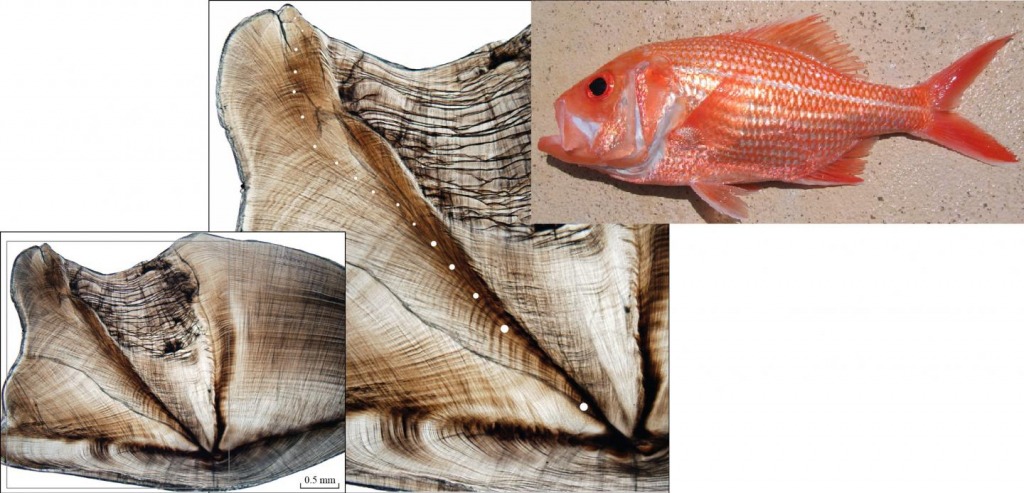
Figure 1. Broad images of otolith section from the 84-year-old Bight redfish, zoomed in with a dot on the first, last and every 5th growth ring. The top right image is a recently caught Bight redfish.
Researchers determine the age of bony fish by studying their otoliths, or ear bones. Fish use otoliths for balance and to hear underwater.as a fish grows, tiny white and clear bands of calcified material are laid down in the otolith, similar to growth rings in a tree.
The otoliths (Figure 2) are removed from fish frames (Figure 3) – skeletons of filleted fish with head and guts intact) and embedded in resin before a very thin section through the core of the otolith is cut. The section (Figure 4) is placed on a microscope slide and growth bands are counted under a microscope to determine the age of the fish (a process called reading).
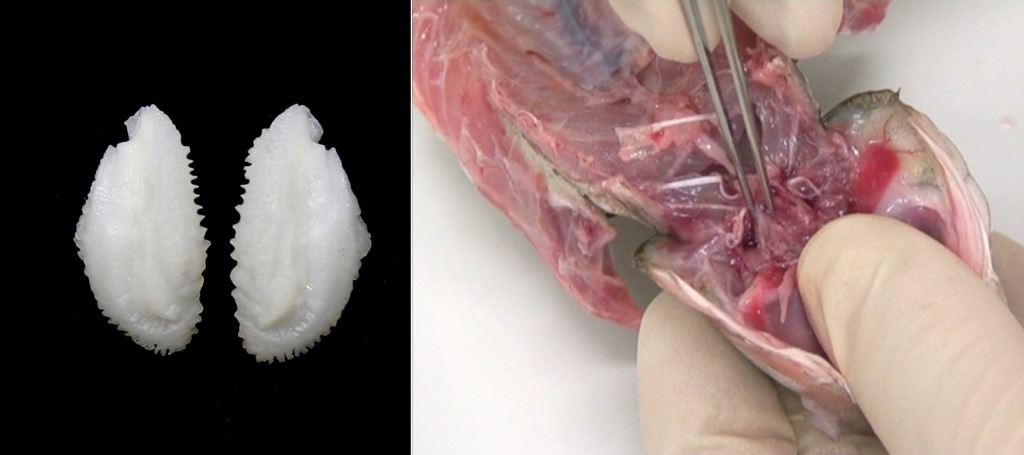 Figure 2. (Left) Two whole otoliths and (Right) The otoliths are extracted from the brain case of bony fish.
Figure 2. (Left) Two whole otoliths and (Right) The otoliths are extracted from the brain case of bony fish.
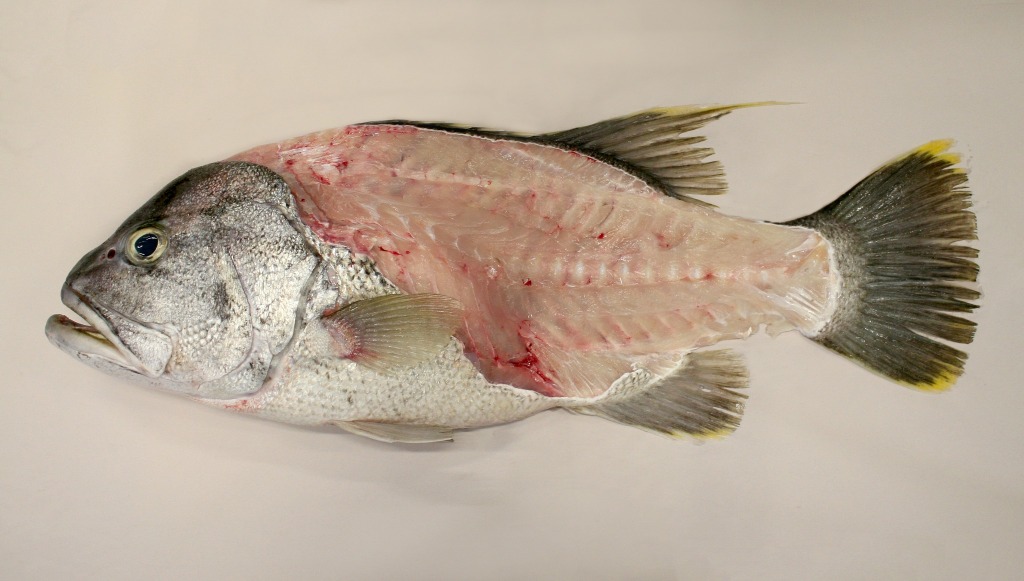
Figure 3. Fish frame of a Western Australian dhufish.
Otoliths of some species can also be read whole under a dissecting microscope using reflected light, when they are immersed in glycerol, which provides greater clarity for reading of the rings.
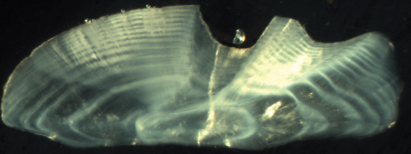
Figure 4. A sectioned otolith of a 12-year-old black bream. In this fish, each set of bands represents a year of growth. When the fish grows slowly new layers of the otolith are packed tightly together creating opaque bands, while during faster growth layers are less dense creating clear bands.
The information contained in otoliths helps researchers to understand the age structure of a population, in other words, how many fish there are in each age group (Figure 5). Assessing the structure over several years, researchers can see the impact of successful recruitment, and the effect of fishing. This information is vital for fisheries scientists to observe long-term demographic changes for a diverse range of fish stocks thus informing sustainable management strategies.
Researchers can also find out about the environmental conditions in which the fish lived through analysing the chemistry of otoliths.
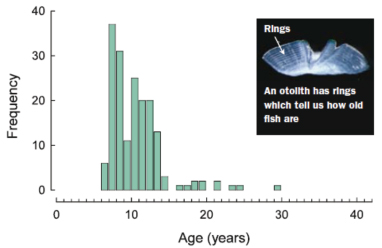
Figure 5. Distribution of ages of Western Australian dhufish from the metropolitan zone in 2005. The low number of fish over 14 years of age is a concern for fisheries managers considering the maximum reported age of this species is around 40 years.
Commercial fishers, fish processors and recreational fishers all contribute ‘fish frames’ to Fisheries researchers. The frames are used to measure the length of the fish, examine the reproductive organs and extract the paired otoliths.
Collecting fish frames and analysing age structures of fish species is a major initiative of the Department of Primary Industries and Regional Development. Information about the species currently being collected and drop-off locations may be found here.
References
Jenke, J. 2002. A guide to good otolith cutting. Fisheries Research Report 141. Department of Fisheries, Western Australia, Perth.
Australian Antarctic Division, Age Matters.
http://www.antarctica.gov.au/news/2010/age-matters [28 November 2018]
Department of Fisheries WA, Recreational Fishing.
http://www.fish.wa.gov.au/Fishing-and-Aquaculture/Recreational-Fishing/Pages/default.aspx [28 November 2018]
Department of Fisheries WA, Research Angler Program (RAP).
http://www.fish.wa.gov.au/About-Us/Pages/Volunteers.aspx [28 November 2018]
Glossary
Age structure
The number of fish of different ages within a population.
Growth bands
Similar band in a part of an animal, such as fish ear stone, marking a period of growth.
Otolith
Calcium carbonate stone located in the brain cavity of bony fish. Fish ear stone.
Population
Animals living in a specified area.
Recruitment
Addition of fish to a stock or population as a result of reproduction, migration or growth to legal size.
